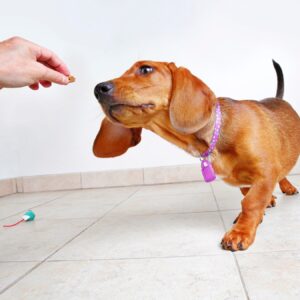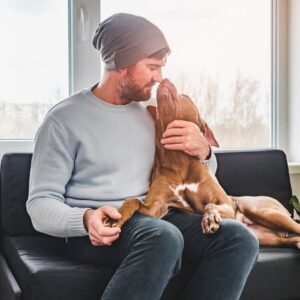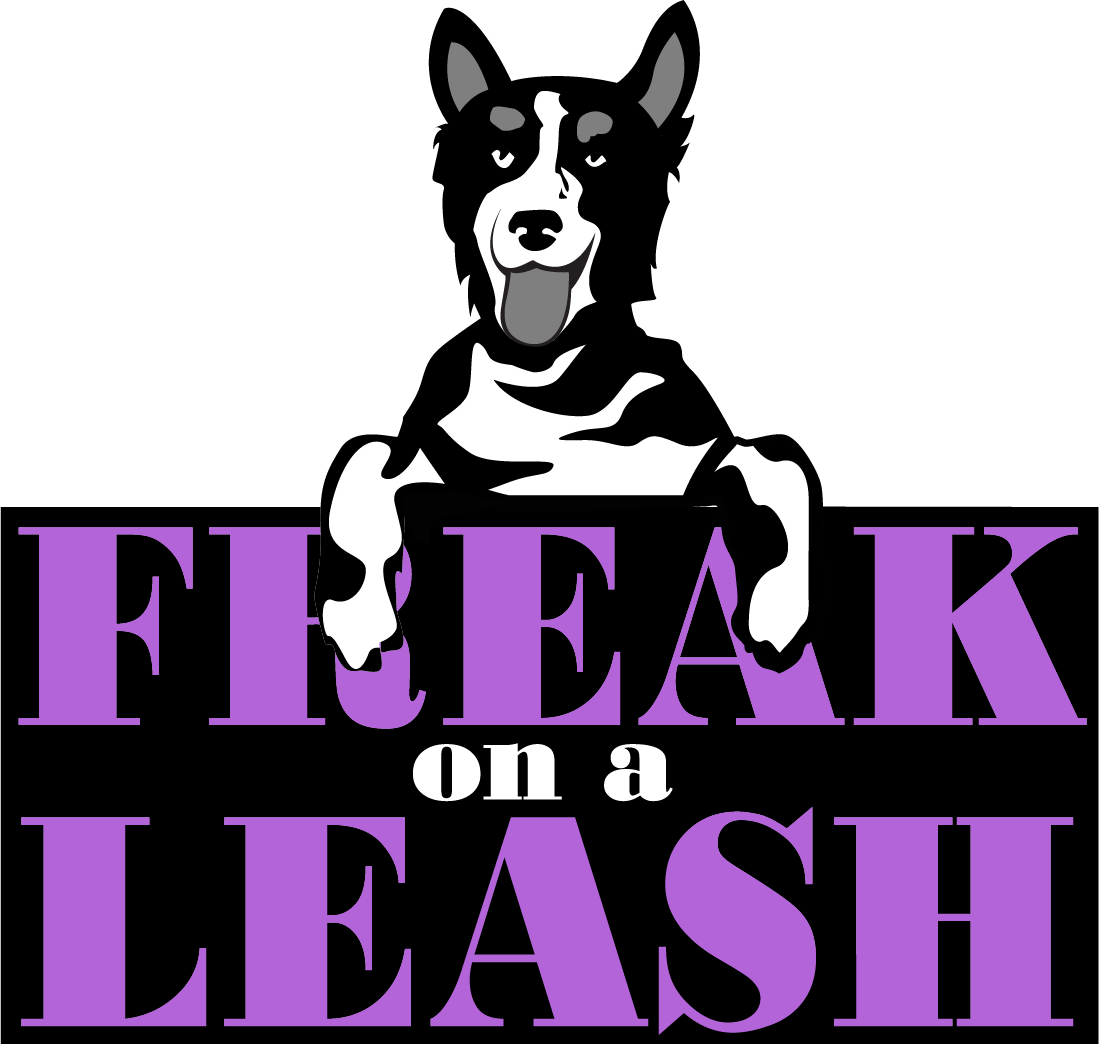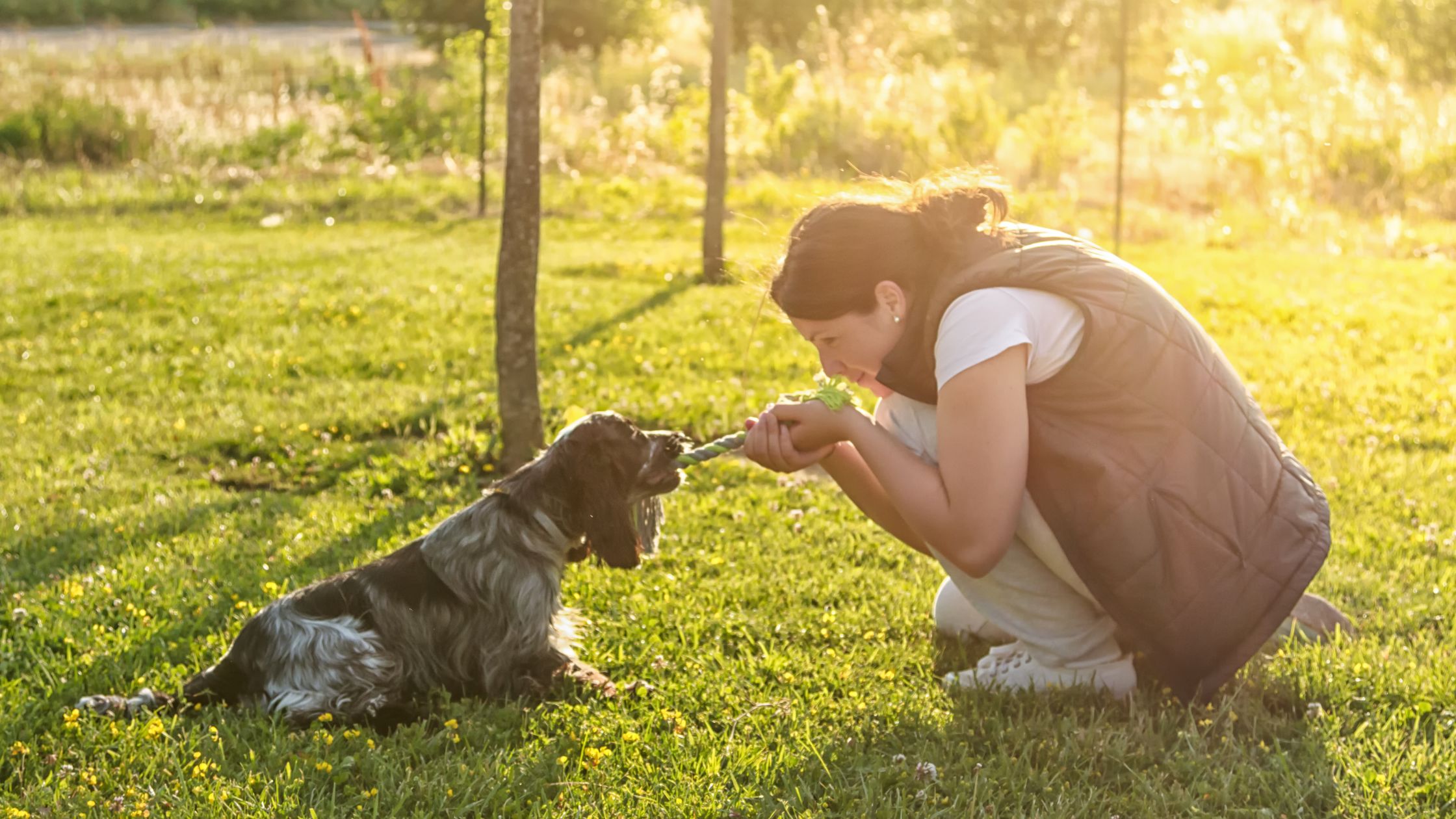Keep That Tail Wagging:
How Positive Reinforcement Can Make Training Your Dog a Dream
 Bringing home a new dog is a special milestone no matter what.
Bringing home a new dog is a special milestone no matter what.
Whether you’re welcoming the brand-new puppy you’ve always dreamed about, adopting a new companion from the animal shelter, or opening your home to a pooch you’ve inherited from a family friend, adding a new member to your family is always exciting.
The shine can come off that apple quickly, though, if your four-legged friend doesn’t receive proper training. Dogs can be quirky, and even the loveliest canine companion is going to develop some not-so-wonderful habits without a solid training foundation.
Puppies and young dogs can adopt a number of undesirable behaviors without careful guidance. Nipping, chasing, tugging on the leash, and – yikes – even eating feces are all things to watch out for as your youngster grows and gains confidence.
Older dogs, especially rescues, may also come with their own sets of issues. These dogs are more likely to demonstrate food guarding behavior, separation anxiety, trouble with housebreaking, and aggression toward other pets and people.
All of these problems can rob you of a rewarding, joyful relationship with your dog.
Thankfully, though, none of these issues are unsolvable. In fact, by using positive reinforcement and proven dog training techniques, you can ensure that your dog is happy, content, and learns good manners.
If you’re a first-time owner or unfamiliar with how to use positive reinforcement, have no fear. There are a number of resources out there to help you, including professional dog training services with reliable, experienced coaches who can walk you through the process.
Read on to learn more about why positive reinforcement training works – and how you can start using it with your pup today.
What is Positive Reinforcement?
 Positive reinforcement is just what it sounds like: rewarding positive behaviors to encourage your dog to keep up the good work.
Positive reinforcement is just what it sounds like: rewarding positive behaviors to encourage your dog to keep up the good work.
This might be as simple as offering your puppy a chew toy before he has a chance to nibble on your fingers with those razor-sharp puppy teeth. Your pup gets a delightful rubber bone to gnaw on, and your skin is spared from the agony of a puppy nip.
Positive reinforcement may also look like offering a treat, praise, or a nice belly-rub when your dog does what you want, whether that’s doing her business outside or walking politely beside you on the leash.
This method is the opposite of positive punishment, which involves punishing your dog for the behaviors you don’t want to see (more below on punishment).
Positive Reinforcement Means Being Proactive
Positive reinforcement requires you, the owner, to be proactive: you need to set your dog up for success ahead of time, so that you can reward him when he does what he’s supposed to.
Again, this might be as simple as grabbing a pack of delicious training treats before you head out on a walk, or stocking his crate with entertaining toys to keep him from chewing up his bed.
When you’re proactive with positive reinforcement, you create an environment where your dog can earn rewards. As you continue to praise him for what he’s doing correctly, his confidence and trust in you will grow, creating an upward cycle of success.
The Negative Side of Positive Punishment
 When you rely on positive punishment, meanwhile, your choices end up taking a backseat to what your dog decides to do. Positive punishment refers to following an unwanted behavior from your dog with an unpleasant reaction in the hopes of decreasing the behavior.
When you rely on positive punishment, meanwhile, your choices end up taking a backseat to what your dog decides to do. Positive punishment refers to following an unwanted behavior from your dog with an unpleasant reaction in the hopes of decreasing the behavior.
It’s called “positive” punishment only because you’re adding an (unpleasant) stimulus: think plus signs and addition, not feel-good positivity. What positive punishment boils down to is you reacting unhappily when your dog does something you don’t like.
This might mean yanking your dog forward when he pauses too long on his walk or scolding him for shredding the puppy pads in his crate. While there are times when we’re forced to react to a dog’s choices (after all, life is unpredictable), punishment is ultimately a very limiting way to train.
For one thing, constant reprimands can be confusing for your dog. He may not even know what he’s in trouble for, which means he doesn’t know what behavior you expect.
Especially for puppies, discipline that occurs after the fact isn’t very effective. This is because dogs, particularly at a young age, are unable to link the cause to the effect. When you yell at your pup for having an accident on the rug half an hour ago, he has no idea what he did wrong. He just knows that you’re upset with him. Positive punishment teaches the dog what not to do, but not what you want him to do instead.
 Not only that, but when your dog only associates you with scolding and harsh discipline, he might become fearful or aggressive in your presence. Constantly being corrected, whether it’s with a sharp word, a tug on the leash, or a smack on the bottom, can make your dog feel anxious, even if you’re not hurting him physically.
Not only that, but when your dog only associates you with scolding and harsh discipline, he might become fearful or aggressive in your presence. Constantly being corrected, whether it’s with a sharp word, a tug on the leash, or a smack on the bottom, can make your dog feel anxious, even if you’re not hurting him physically.
Just like people, dogs find negative energy stressful and unpleasant to be around. If that’s all he’s getting from you, he may want to avoid being with you altogether… and that’s the opposite of what you want.
How To Begin Using Positive Reinforcement
You can begin using positive reinforcement training with any dog, at any time. Whether you’re building a relationship with an eight-week-old puppy or trying to establish a bond with a senior citizen, it’s always the right time to create an atmosphere of trust and rewards.
Have Some Fun
One of the best things about positive reinforcement training for your dog is that it’s genuinely fun for everyone. Even a shy or fearful dog will soon associate training with good times once she realizes she’s getting a yummy treat every time she sits, comes, or stays.
Experiment with which treats catch your dog’s interest and explore different toys and games to find ones they really like. Depending on your dog’s size, breed, and life experiences, they may have preferences for one type of toy or another. Keep in mind, the more they enjoy their rewards, the more buy-in you’ve created… and the more effective your training will be.
Get Family and Friends Involved
Your dog doesn’t live in a bubble, and neither do you! If other people live with you or see your dog regularly, let everyone join in the training fun. Even small children can help reinforce positive behavior by rewarding your pooch for doing the right thing. Asking trusted friends or neighbors to help is a good way to mix it up, too.
Making expected behaviors consistent from person to person makes it easier for your dog to understand what she’s supposed to do. When it clicks for her that she needs to walk politely beside whoever is holding the leash (even if it’s not you!), going on a walk becomes simpler and safer for both canine and human.
Start Slow
Whether you’re working with a youngster or a dog who’s been there, done that, training sessions should start out slow. The last thing you want to do is drill a new skill until it’s no longer fun.
Instead, keep your sessions to about 15 minutes: long enough for your dog to practice, but not so long that he starts daydreaming about something else. Keep in mind, mental stimulation can be tiring for your four-legged buddy! Even a short training session can leave your dog ready for a nap, so plan for some downtime when you wrap things up.
Don’t Be Afraid to Call the Professionals
If you like the sound of positive reinforcement but don’t know where to start, don’t be shy about looking for a dog training expert to get things off the ground.
Experienced dog trainers can be helpful for building your dog’s confidence, but also for helping you build your own! By watching a pro run a training session, you can pick up on what to emulate when you’re with your pup one-on-one.
More challenging dogs may also benefit from working with someone who has seen it all. Whether your pal is rowdy by nature (some breeds can be more challenging to train) or has experienced past trauma (many rescues sadly have troubled backgrounds), it can be useful to let an expert get things started when you have a difficult dog.
Passing things off to a professional doesn’t mean you won’t be your dog’s #1, by the way. By ensuring you know how to handle your dog with love, rewards, and confidence, you’re actually setting yourself up for success, too. Ready to bring out the best in your pup? The positive reinforcement trainers at Freak On A Leash can’t wait to work with you!
 After all, positive reinforcement doesn’t just work on dogs – it’s great for people, too.
After all, positive reinforcement doesn’t just work on dogs – it’s great for people, too.
Interested in learning more about how to find a good dog trainer?

